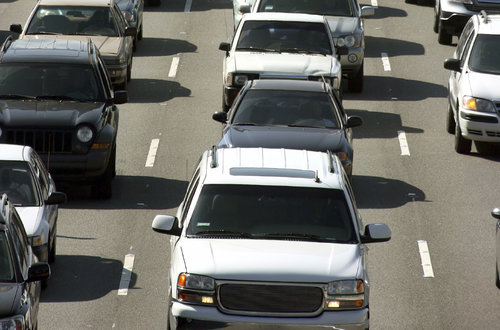Although it’s still far from its pre-recession peak, car transportation is up
There has been a significant increase in the number of Americans driving, according to a report released by Doug Short of Advisor Perspectives.
The report looked at the estimated vehicle miles traveled on roads when adjusted for population growth, and found that miles traveled rose 2.23 percent year-over-year in Sept. 2015. The current level matches the rate in 2011, before its 2013 dip to its lowest level since 1996.
The report also cited no real correlation between gas prices and distance traveled. In 2009, gas prices dropped to their lowest level since 2004, which did nothing to stop the massive drop in miles traveled. Additionally, in the summer of 2014, gas prices dropped sharply, well after the travel upswing begun earlier in Jan.
Homeownership and Car Ownership
While the increasing rate of driving and falling price of gas correlate with the economic recovery, such behavior contradicts recent surveys on consumer living preferences – namely, that consumers want to live in more walkable areas. According to the Urban Life Institute, even though 88 percent of people said they were satisfied with their living conditions, 54 percent said shopping and entertainment were not within walking distance, and 48 percent said bike lanes were insufficient to make cycling a viable form of transportation.
Recent research, however, suggests that such sentiments were driven more by the downturn than anything else. After all, the recession made it difficult to purchase or maintain a car, and fewer people had jobs that required long commutes; some areas saw such jobs drop by as much as 7 percent.
Furthermore, according to the National Association of Realtors’ 2015 Profile of Buyers and Sellers, 72 percent of all homebuyers bought homes in suburbs and small towns, and for those homebuyers, walkability was a far smaller concern than for those who lived in urban or central city areas. For instance, walkability to entertainment and leisure activities was a far greater factor for urban homeowners (32 percent) than suburban (22 percent) and small town (17 percent); walkability to parks and recreation (22 percent for urban, 18 percent for suburban and 17 percent for small town), and public transportation (11 percent urban, 5 percent suburban, and 3 percent small town) saw similar stats.
A key factor is that a majority of those surveyed were Baby Boomers and Gen Xers. Millennials, who are soon to become a large majority in the housing market, are more likely to seek walkable urban living rather than car-centric suburbs/small towns. Surveys show that they would still buy outside urban areas with the right incentives, such as a nearby parks, grocery stores and family and friends.

